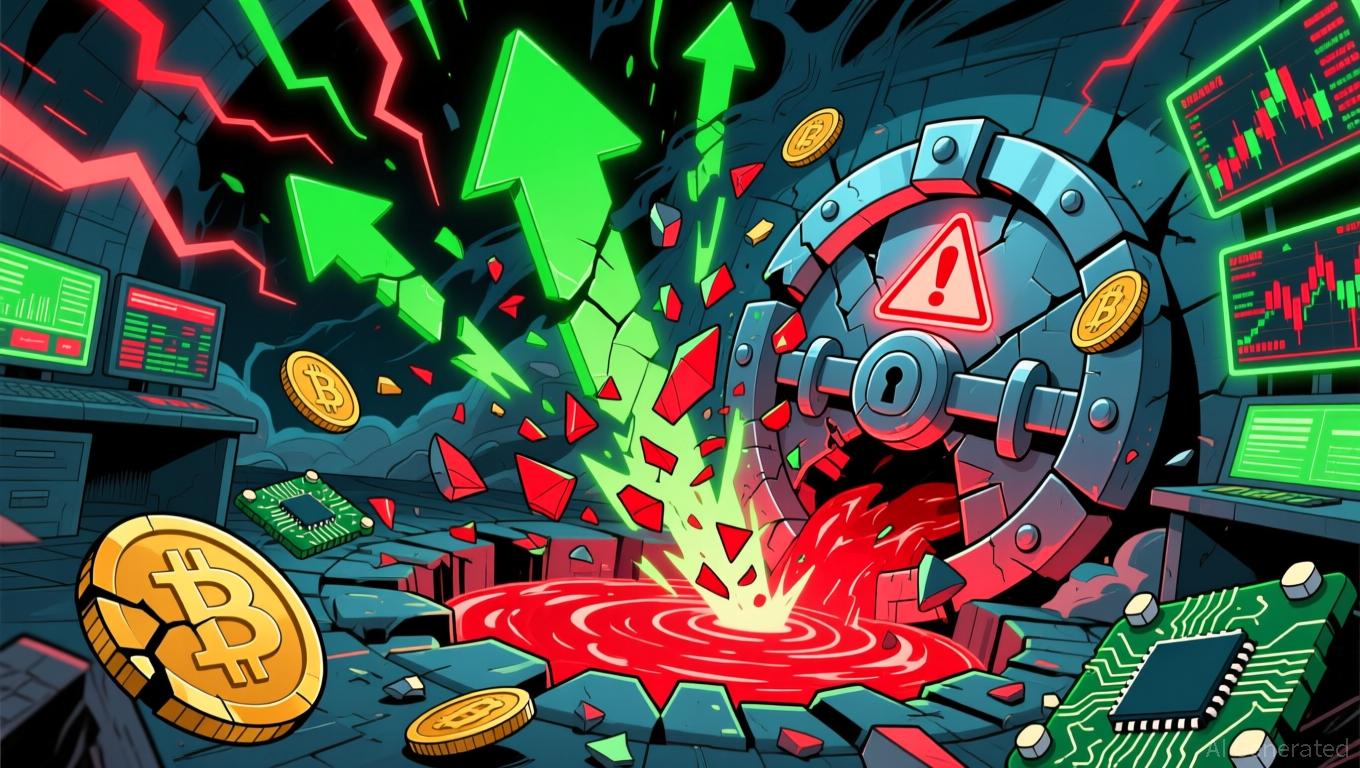Hyperliquid News Today: Hyperliquid's $4.9 Million Loss Highlights DeFi's Ongoing Challenges with Risk Management
- Hyperliquid paused its Arbitrum bridge after a $4.9M loss from a POPCAT meme coin price manipulation scheme, as reported by Coinotag. - A trader used $3M in stablecoins to artificially inflate POPCAT's price, triggering liquidations and exposing DeFi's risks in volatile assets. - The incident mirrors a 2025 JELLYJELLY manipulation case, with experts criticizing Hyperliquid's immaturity in balancing decentralization and risk controls. - Analysts urge stronger safeguards for community-funded pools, as plat
Hyperliquid, a decentralized platform for perpetual futures trading, temporarily suspended its
On-chain investigators revealed that a user—known as MLMabc on X—used $3 million in stablecoins to establish a $20 million long position on POPCAT across 19 different wallets. The trader placed significant buy orders at $0.21 per coin to artificially boost demand, forming a "buy wall." Once this wall was suddenly withdrawn, POPCAT's price plummeted, leading to the rapid liquidation of the $20–30 million position. Hyperliquid's liquidity provider (HLP) had to assume the position to meet its obligations, which led to the substantial loss, as detailed in a

This situation is reminiscent of an event in March 2025, when a trader manipulated the
POPCAT, which has a market value of $136 million, had increased by 5.6% in the 24 hours before the incident but was still down 91% over the past year, according to
Hyperliquid has not issued a public statement detailing the exact cause of the loss but did confirm that the vault was impacted by liquidations. The exchange's status page showed no ongoing problems as of late Wednesday, as
This episode highlights the broader challenges within DeFi, where liquidity pools managed by the community are exposed to unique risks. As platforms broaden their offerings to include more speculative assets, industry experts recommend stricter position limits and improved oversight to reduce vulnerabilities. For now, Hyperliquid's quick move to isolate the compromised bridge reflects standard procedures for containing potential systemic threats, according to blockchain security analysts, as
---
Disclaimer: The content of this article solely reflects the author's opinion and does not represent the platform in any capacity. This article is not intended to serve as a reference for making investment decisions.
You may also like
H-1B Enforcement at Odds with Trump’s Stated Reliance on Overseas Labor
- Trump's administration launched 175 H-1B visa investigations targeting wage fraud and fake work sites to "protect American jobs." - The crackdown contradicts Trump's admission that U.S. industries face critical skills gaps requiring foreign labor in tech and manufacturing. - A South Korean EV battery plant worker raid and corporate critiques highlight tensions between immigration enforcement and labor shortages. - Proposed $2,000 tariff dividends risk inflation while H-1B restrictions test the viability

U.S. Debt Fluctuations Surge Amid AI-Driven Borrowing Growth and Fed Faces Fiscal Uncertainty
- U.S. Debt Volatility Index hits one-month high in November, reflecting market anxiety amid government shutdown resolution and fiscal risks. - AI infrastructure debt surges 112% to $25B in 2025, driven by tech giants’ $75B in bonds for GPU/cloud projects, raising overleveraging concerns. - Fed faces mixed signals: October job losses push December rate cut odds to 68%, while gold/silver rise 2-3% as investors seek safe havens amid fiscal/geopolitical risks. - Delayed economic data from shutdown complicates

ChainOpera AI Token Plunge: An Alert for Investors in AI-Based Cryptocurrencies
- ChainOpera AI Index's 54% 2025 collapse exposed systemic risks in AI-driven crypto assets, driven by governance failures, regulatory ambiguity, and technical vulnerabilities. - C3.ai's leadership turmoil and $116.8M loss triggered sell-offs, while the CLARITY Act's vague jurisdictional framework created legal gray areas for AI-based crypto projects. - Model Context Protocol vulnerabilities surged 270% in Q3 2025, highlighting inadequate governance models as 49% of high-severity AI risks remain undetected

Navigating the Dangers of New Cryptocurrency Tokens: Insights Gained from the COAI Token Fraud
- COAI token's 2025 collapse exposed systemic risks in algorithmic stablecoins, centralized governance, and fragmented regulatory frameworks. - xUSD/deUSD stablecoins lost dollar peg during liquidity crisis, while 87.9% token concentration enabled panic selling and manipulation. - Regulatory gaps pre-collapse allowed COAI to exploit loosely regulated markets, but post-crisis reforms like MiCA and GENIUS Act now demand stricter compliance. - Investor sentiment shifted toward transparency, with demand for re
